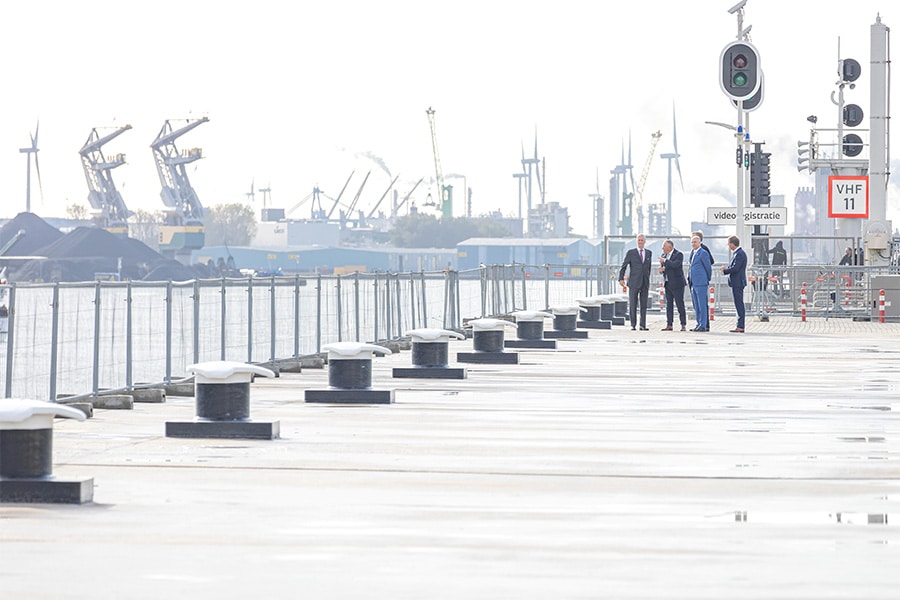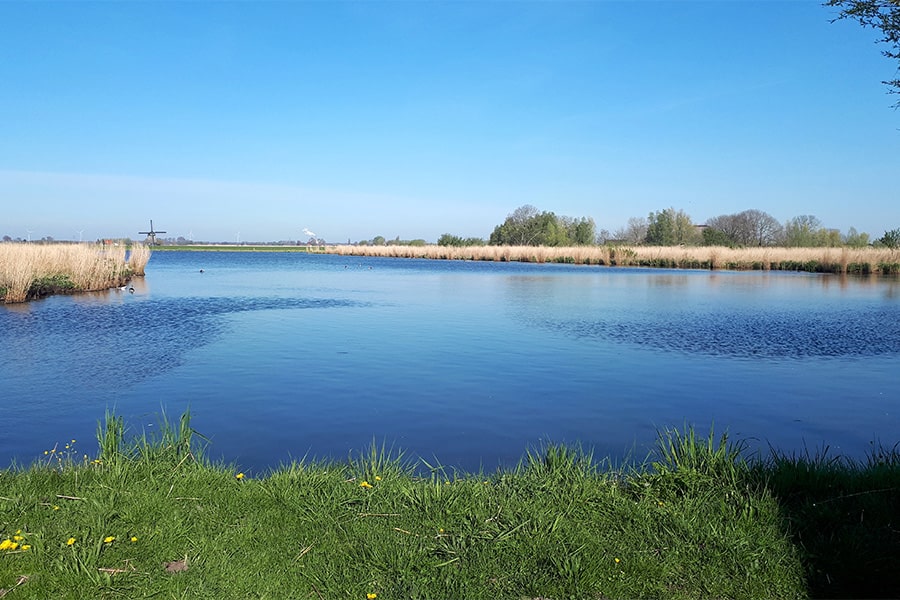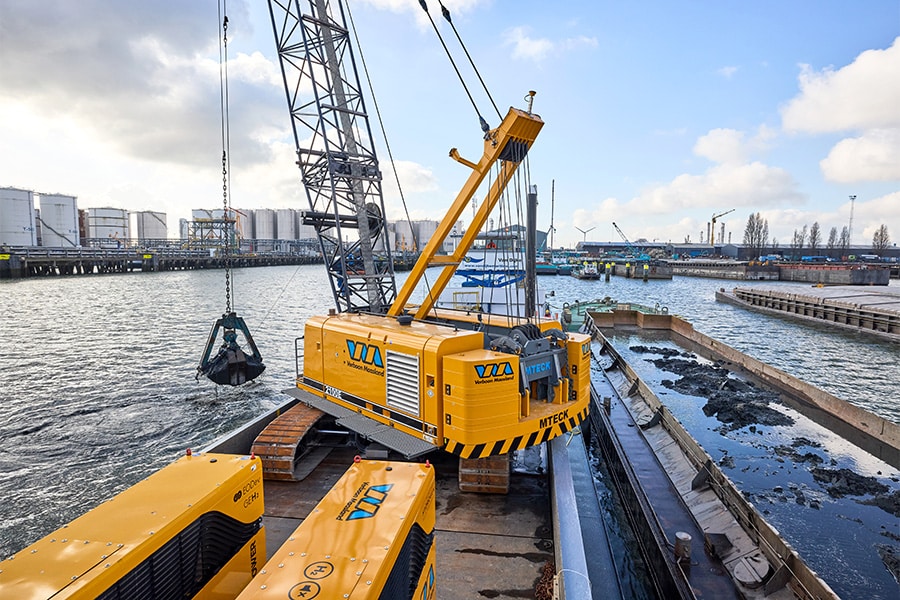
New Lock in Terneuzen royally opened
On Friday, Oct. 11, the New Lock in Terneuzen was festively opened by His Majesty King Willem-Alexander and His Majesty King Philip. With a push of a button, they gave the MV Bregaglia the signal to be the first ship to sail through the New Lock. The bulk carrier sailed out of the Nieuwe Sluis under a drum roll and with smoke comets in the colors of the Dutch and Belgian flags, bound for Ghent. It is the largest ship ever to sail towards Ghent.
Both kings performed the official opening ceremony together from the Z9, an electric event ship, in the presence of a number of guests involved with the New Lock. The Z9 and a boat parade accompanied the MV Bregaglia on its first meters on the Canal from Ghent to Terneuzen.
Afterwards, both kings entered into conversation on the Z9 with some representatives of companies that use the locks at Terneuzen. The kings then moved to the lock platform of the New Lock. There they were explained the (construction of the) New Lock by Eric Marteijn, project director of Nieuwe Sluis Terneuzen and Gerben Turkstra, project director of contractor combination Sassevaart. In the Nieuwe Sluis control building, after visiting the control room, the kings had an informal discussion with representatives of local residents, volunteers from the Portaal van Vlaanderen (the information center about the port area) and several designers and builders.

New Lock
The New Lock is 427 meters long, 55 meters wide and 16.44 meters deep. The lock can accommodate large ocean-going vessels up to 366 meters long, 49 meters wide and 14.5 meters deep. The New Lock was built within the existing lock complex in Terneuzen, in the North Sea Port port area. The Middle Lock, in use since 1910, made way for the New Lock.
Access and flow
The New Lock will provide better access and smoother flow for ships sailing from the Westerschelde to the Ghent to Terneuzen Canal and beyond. The lock is part of the shipping route between Rotterdam and Paris. The number of ships using the North Sea locks, Terneuzen's lock complex, is increasing. The size of the ships is also growing. The New Lock is as large as the new locks in the Panama Canal and thus prepared for the increasing scale of shipping worldwide. Larger seagoing vessels will soon be able to reach Terneuzen and Ghent. As a result, the New Lock will provide new economic activities in both the Zeeland-Flemish and Flemish regions and better utilization of the economic potential of the Canal Zone in both regions. The capacity of the North Sea locks also increases, reducing waiting time for inland vessels.

North Sea locks
The New Lock, together with the West Lock and the East Lock, is part of the North Sea locks. In 2023, 56,000 ships passed through this lock complex. This number is expected to grow to 96,000 in 2040. The lock complex is close to downtown Terneuzen. In addition to ships passing through the complex, the lock complex is an important access route for road traffic. In addition, the Nieuwe Sluis is part of the primary flood barrier. Located at 9.5 meters above sea level, the New Lock is prepared for a rise in sea level. The New Lock is also used to discharge excess water from Flanders via the Ghent-Terneuzen Canal.
Construction
Construction of the New Lock began in 2017 and will be completed in 2024. During construction, road and waterway traffic could largely continue. The capacity of the lock complex was maintained until October 2021 thanks to the temporary Captain Rooibos Canal. Road traffic had to deal with various diversions and speed limits during construction, but otherwise suffered little inconvenience. Residents of downtown Terneuzen experienced noise and vibration nuisance as a result of construction. The use of explosives in March 2022 for the demolition of the Middle Lock resulted in damage to buildings in the inner city and about 100 claims for damages from residents. After a thorough evaluation of this event, the modus operandi for the demolition of the Middle Lock was adjusted. The damage claims have also since been settled.

Testing and practice
After the official opening of the New Lock, a period of testing and practice will follow before the lock is put into operation. This period of "learning" is expected to take several months.
Client
The New Lock was commissioned by the Flemish-Dutch Scheldt Commission (VNSC), a partnership of the Dutch Ministry of Infrastructure and Water Management and the Flemish Department of Mobility and Public Works. On behalf of the VNSC, contractor consortium Sassevaart (consisting of BAM Infra, Stadsbader Contractors, DEME, Van Laere and Equans) built the lock. Sassevaart will also be responsible for maintenance for the next two years. The total cost of constructing the New Lock is rounded to 1.2 billion euros. The Netherlands will contribute rounded 295 million euros including a regional contribution. Flanders will pay the remaining costs. The port company North Sea Port contributes to the Flemish part. The project is co-financed with a contribution of 48 million euros from the CEF (Connecting Europe Facility) fund of the European Union.



